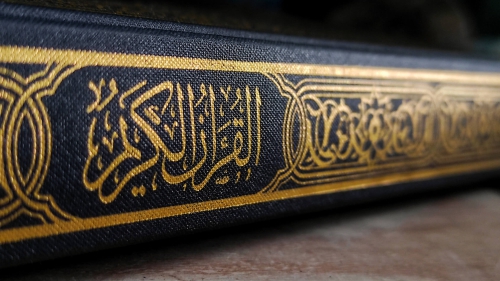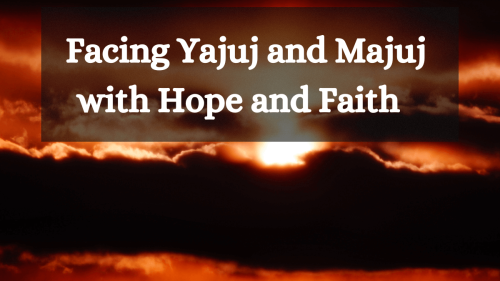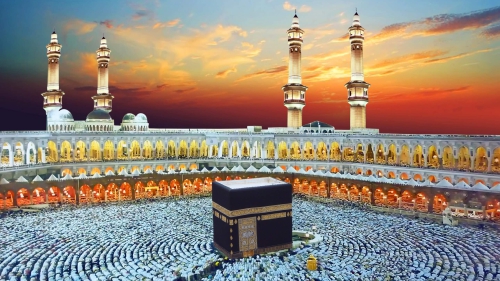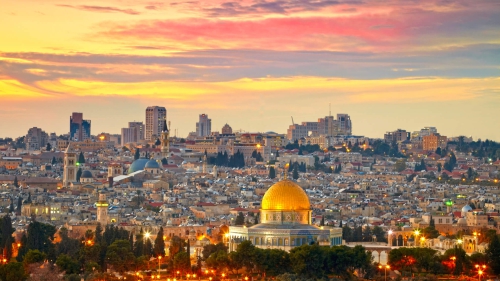The Jewish and Islamic Pilgrimage (Hajj)

After two years of Covid restrictions, a group of about 190 UK pilgrims who arrived on June 25, 2022 represent the first worshippers from Europe, the US or Australia to journey to Makka for this year’s Hajj season.
Perhaps, in the next few years the present Hajj to the Ka’ba in Makka, and the memories of the past Hajj to the Temple in Jerusalem; will be seen as long term alternate swings of a sacred pendulum attached to one holy source in the heavens.
Let me explain.
The Ka’ba is the original center of Hajj. Destroyed in the days of Noah, it was rebuilt by Prophets Abraham and his son Ishmael. After several centuries it was desecrated by later generations of idol worshippers. During the many centuries when the Ka’ba was desecrated, Prophet Solomon built a Temple as a center for Haj on the site where Prophet Abraham bound his son Isaac as an offering.
Four centuries later the Temple of Solomon was destroyed in 587 BCE by the Babylonians. That Temple, rebuilt with the support of Cyrus the Great King of Persia, lasted for almost six centuries, until with the destruction of the Second Temple by the Romans in 70 CE, the pilgrimage Hajj aspect of the week long harvest festival of Sukkot began a gradual decline in the spiritual consciousness of the Jewish People.
Most of the many thousands of Jews from foreign lands outside the Land of Israel; and the tens of thousands of Jews from all over the Land of Israel outside the city of Jerusalem; who used to come each year to celebrate the week of Sukkot in Jerusalem at Bait ul-Muqaddas, the furthest sanctuary; ceased coming.
Two generations later, after a second major Jewish revolt (132-135 CE) in the land of Israel, the Romans rebuilt Jerusalem as a pagan city filled with idols, That stopped all Jews from coming to the ruined site of the Jerusalem Temple--Bait ul Muqaddas/Beit HaMiqdash.
Very few Jews today realize that for more than 1,000 years, while Jerusalem's First and Second Temple--Bait ul Muqaddas/Beit HaMiqdash stood, the Jewish festival of Hag Sukkot was celebrated as a Hajj, a pilgrimage festival. In Biblical times the Hebrew word Hag was pronounced Hajj.
The Torah declares, “Celebrate Hajj Sukkot for seven days after you have harvested the produce of your threshing floor and your winepress. Be joyful at your festival—you, your sons and daughters, your male and female servants, the Levites, the foreigners, the fatherless and the widows who live in your towns.
For seven days celebrate the festival to the Lord your God at the place the Lord will choose. For the Lord your God will bless you in all your harvest and in all the work of your hands, and your joy will be complete. Three times a year all your men must appear before the Lord your God at the place he will choose: at the Hajj of Matzah, the Hajj of Weeks, and the Hajj of Sukkot. (Deuteronomy 16:13-16)
The Hajj of Sukkot was chosen by Prophet Solomon to dedicate the First Temple in Jerusalem. (1Kings 8; 2). Hajj Sukkot was so important during the centuries when Solomon's Temple stood that it was often called simply "the Hajj” (1 Kings 8:3; 8:65; 12:62; 2 Chronicles 5:3; 7:8) perhaps because of the very large numbers of Jews who came up to the Temple in Jerusalem,
On each of the first six days of Sukkot it was traditional to circle the Temple alter while reciting psalms. On the seventh day of Sukkot the custom was to circle the Temple alter seven times. As the Oral Torah says: "It was customary to make one procession around the altar on each day of Sukkot, and seven on the seventh day." (Mishnah Sukkah 4:5).
Each circle is done in honor of a prophet; Abraham, Isaac, Jacob, Joseph, Moses, Aaron and David. Muslims will see some basic similarities and many ritual differences between the Jewish Hajj and the Islamic Hajj.
For Muslims, the Furthest Sanctuary is located in Jerusalem. “Glory to He Who carried His servant by night, from the Holy Sanctuary to the Furthest Sanctuary, the precincts of which We have blessed, so that We might show him some of Our signs. Surely He is All-Hearing, All-Seeing. [Qur’an 17:1]
It is significant that the ruins of the Jerusalem Temple was the site of Prophet Muhammad's ascension—miraj-- up to the heavens.
One might say the destruction of the Furthest Sanctuary center of monotheistic pilgrimage in Jerusalem by the pagan Romans was, five and a half centuries afterward, overcome by Prophet Muhammad's ascension—miraj up to the heavens, and the soon to be realized removal by Prophet Muhammad of the 360 idols from the paganized Ka'ba in Makka.
Not only did the Prophet rid the Ka’ba of all its impurities, but he also reinstated all the rites of Hajj which were established by Allah's Permission, in the time of Prophet Ibrahim. Specific injunctions in the Quran were revealed in order to eliminate all the false rites which had become rampant in the many centuries of the pre-Islamic period.
All indecent and shameful acts were strictly banned in Allah's statement: "There is to be no lewdness nor wrangles during Hajj." [2:197] The Prophet also put a stop to the practice of circling the Kaba in a state of nudity and the argument that the pagans put forward to justify this ritual was sharply rebutted in Allah's question: "Say: Who has forbidden the adornment [clothes] given by Allah which He produced for His Slaves?" [7:32]
Competitions among poets in the exaltations of their forefathers and their tribesmen's achievements were all stopped. Instead, Allah told them: "And when you have completed your rites [of Hajj] then remember Allah as you remember your forefathers; nay with a more vigorous remembrance." [2:200]
The deplorable practice of spattering blood from the sacrificed animals on the walls of the Ka’ba and hanging their flesh on alters was rejected: "It is neither their meat nor their blood that reaches Allah, but it is Taqwaa (piety) from you that reaches Him." [22:37]
Since almost all rabbis believe that the Jerusalem Temple will only be rebuilt in the Messianic Age of world peace and universal justice it would seem that the cycle of the pollution and destruction of the two Holy Sanctuaries, first built by Prophet Abraham and his two sons, has now come to an end and the Ka’ba will never be destroyed again.
The Prophet Zechariah envisions a future time when God helps humans to establish worldwide peace. All the nations in the world will then travel to Makka and Jerusalem to worship God.
During Hajj Sukkot, a future Jerusalem Temple will welcome Jews, non-Jews, and even those who were previously Israel's enemies, to enter Jerusalem to worship the One God of all mankind: “Then the survivors from all the nations that have attacked Jerusalem, will go up year after year to worship the King, the Lord Almighty, and to celebrate Hajj Sukkot.” [Zechariah 14:16]
Just as the Ka'ba has always welcomed all Muslims who answer the call: “Call upon the people for Hajj. They will come to you on their bare feet or riding any weak camel and they come to you from every far desert. [Qur’an 22:27].
The Qur’an refers to Prophet Abraham as a community or a nation: “Abraham was a nation/community [Ummah]; dutiful to God, a monotheist [hanif], not one of the polytheists.” (16:120) If Prophet Abraham is an Ummah; then fighting between the descendants of Prophets Ishmael and Isaac is a civil war and should always be avoided. And prior to the 20th century Arabs and Jews never did make war with each other.
If all Arabs and Jews can live up to the ideal that ‘the descendants of Abraham’s sons should never make war against each other’ is the will of God; we will help fulfill the 2,700 year old vision of Prophet Isaiah: “In that day there will be a highway from Egypt to Assyria. The Assyrians will go to Egypt, and the Egyptians to Assyria. The Egyptians and Assyrians will worship together. In that day Israel will join a three-party alliance with Egypt and Assyria, a blessing upon the heart. The LORD of Hosts will bless them saying, “Blessed be Egypt My people, Assyria My handiwork, and Israel My inheritance.”…(Isaiah 19:23-5)
May the Hajj help this to occur in our lifetime.
Topics: Hajj, Interfaith, Jerusalem, Makkah (Mecca), Prophet Ibrahim (Abraham)
Views: 3537
Related Suggestions

















